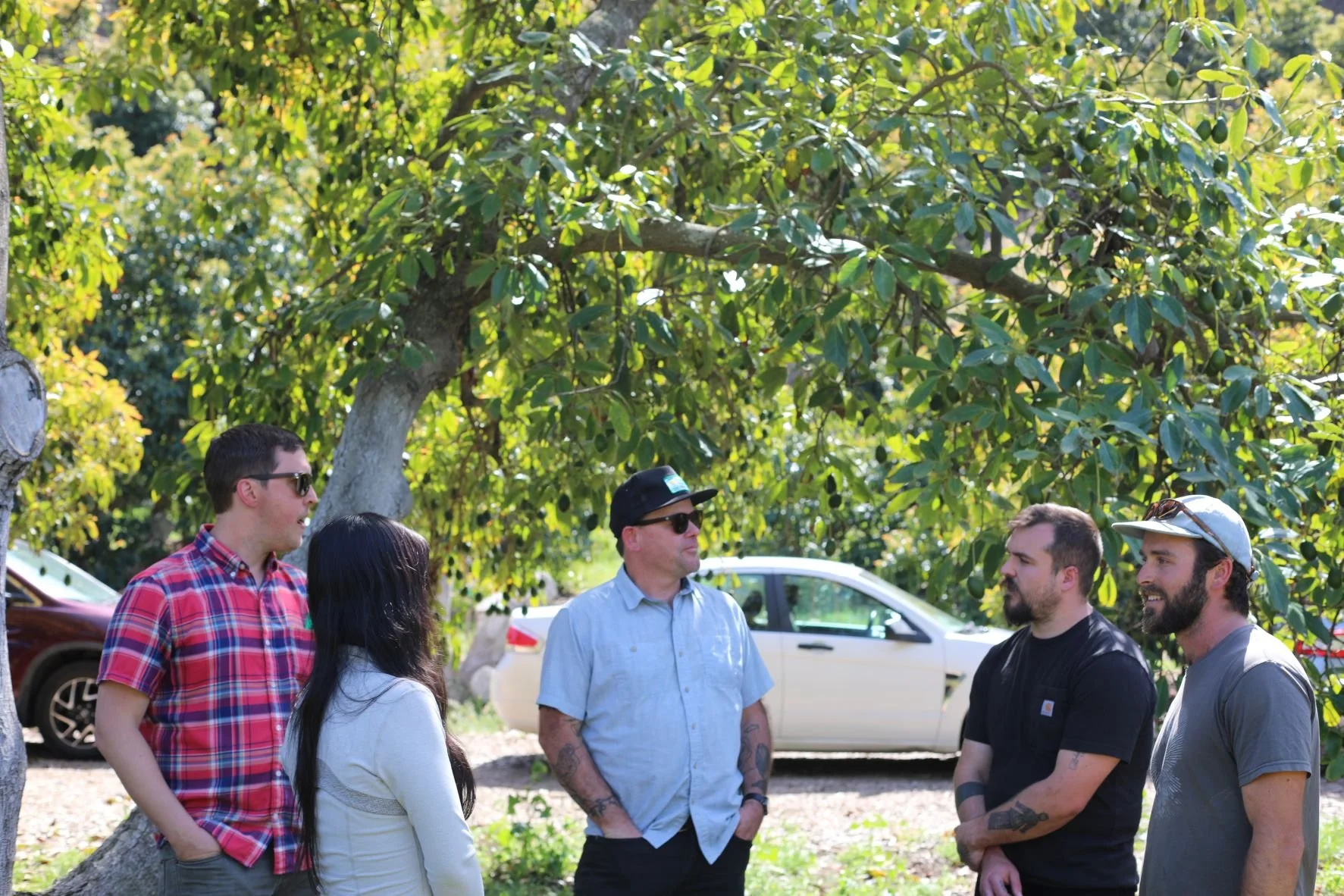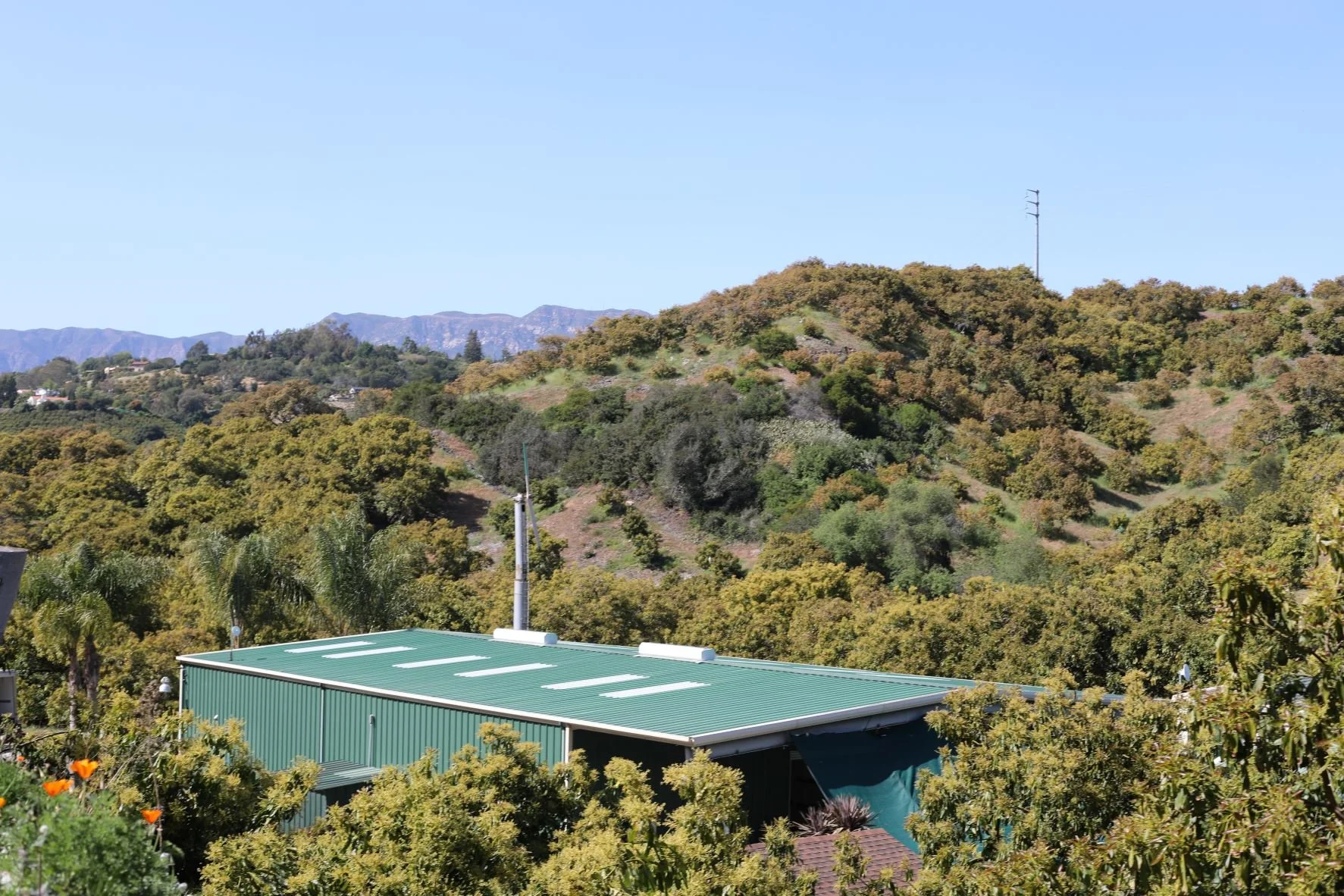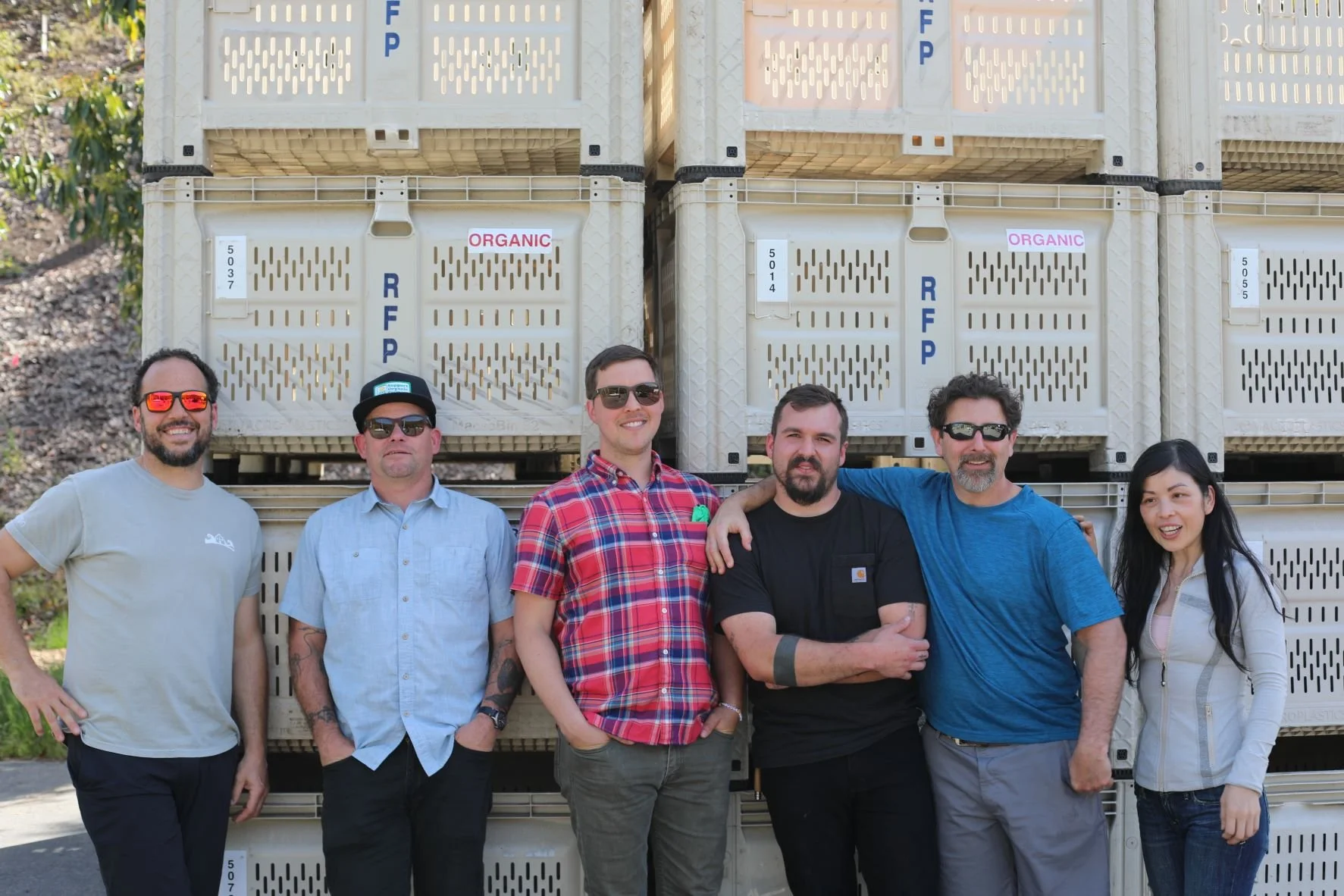FARM TOUR 2022: RINCON AVOCADOS
Just south of Santa Barbara you’ll find the beautiful slopes of Carpinteria, where Tracy, Dave, and their son, Sean, have spent the past two decades in a world of avocados. We met them at their packing facility, in the heart of their 35 acres of avocado trees. The palms swayed in the cooling breeze, as tractors drove in bearing freshly picked bins, and large trucks skillfully maneuver out of the driveway for delivery.
When the family acquired the Belmonte Ranch in 2000, they built the pack shed to serve as a hub for their fellow farmers in the region. There they grow their own fruit and consolidate the fruit of their neighboring farmers, before processing and shipping under the Rincon Farms label – aptly named after the famous surf spot around the corner (“rincon”). Proximity to the sea makes it’s mark: the region is famous for delicious and nutritious avocados, as influenced by the cool climate of the Pacific Ocean. And Tracy assured us that when it comes to avocados, the microclimate of Carpinteria is “the best of the best.”
According to Dave, their modest but state of the art facility at times can pack about 10% of all organic avocados in the state. That’s about 30 full bins or 30,000 pounds of fruit per day. The fruit arrives hard as rock, which works in their favor as the avocados make their way down various sorting lines. The choice fruit is sorted out, and each piece of premium fruit passes through an automatic sticker machine before employees place-pack into the boxes you see, based on size. There’s no water in the pack line to ensure food safety, which is why you may see some dust and dirt on the fruit’s exterior.
The need for substantial sorting poses a business challenge: Sean told us that choice or #2 fruit (avocados with significant scarring or sunburn on the exterior) can make up almost 20% of incoming loads, especially for organic. This is largely because thrips are the main pest for avocados – as with citrus and stone fruit, the pests live on the leaves and feed on immature fruit. Beyond thrip and mechanical damage, sizing can be an issue – they had many bins of “pee-wee” sized avocados, sold for cents on the dollar wherever possible.
As we made our way around the property, Sean explained his work to transition their home ranch to 100% organic. Bright orange poppies bloomed alongside clover and other wildflowers, which Sean told us were part of his newly planted “living mulch”: a diversity of plant species covering the ground that not only aids with water retention but encourages fungal life in the soil and pollinators above. This also works to break up the thrip cycle, where other organic avocado farmers tend to use wood chips.
Beyond the mulch, Sean’s working to build an organic community and a culture of trust. The bidding process for avocados can be competitive, but by working to maintain higher returns for his neighbors, he can encourage increased organic production in the area. So far, he says, he has seen great support from the community.
We wandered the slopes, eyeing the trees with full sets of avocados, as they shared some growing practices and a few fun facts. As with stone fruit, most commercial avocado varieties are grafted onto a fungal-resistant rootstock, where a single tree can hold multiple varieties. Tracy recounted a Sesame Street special filmed on their property a few years back, featuring a tree that carried Reed avocados on one side, with Hass on the other. And with the coastal influence, the fruit can hold on the tree for longer, creating buttery-delicious fruit with high oil content. (It’s true – as you know, the fruit eats fantastic).
Field Conversation
The trees take 4 years from infancy to produce fruit, another 3 years until they produce profit, and when cared for properly can continue producing for up to 45 years. They pick through three times as the avocados size up, but the ranch topography creates unique harvesting challenges: most organic orchards are planted on level ground, but the majority of his trees dot the steep hillsides of the property. It’s an incredibly skilled feat to harvest from these trees: think 35 foot ladders with long poles, descending the ladder with a 50# bag, and sliding down the slope with the goods... “the work they do is incredibly tough, and it's a blessing that they do it,” Sean told us. And paying their crew well is a major factor for the high price of avocados.
There are other challenges: the property is on the edge of the Carpinteria protected coastal zones, which means they can’t dig for a well. Instead, they currently buy water from Lake Casitas, which is dwindling in capacity due to drought. Part of their plan is to diversify the ranch: “Avocados are a big water crop; we water once a week in the summertime. But when you take care of your soil, and you plant a Mediterranean crop, you might have to water twice in the summer.” Sean is currently planning a dragonfruit orchard, and he’s looking into growing figs, persimmons, agave, and more down the line.
As we looked out over the valley from the top of their vista, we could see the cherimoyas and other sub-tropical crops on the neighboring properties, and we could almost see the ocean. It’s hard to imagine water scarcity and wildfire when perched to the side of the world’s greatest ocean. But such is the story of the Mediterranean climate, where 2018 saw good fortune for Rincon Farms: when the strong Santa Ana winds sent the 2017-2018 Thomas fire to the edge of their property, the ranch happened to be a strategic property for firetrucks. By staving off the blaze, the firefighters saved their orchards and pack shed.
Earl’s is looking forward to continuing a strong partnership with Rincon, and many more trips to visit our central coast growers. Their facility is a major resource for the region, and they continue to solidify their position as a cornerstone for the organic avocado community. By supporting the delicious Rincon label avocado, we support more growers who are doing it right!
Earl’s Organic





